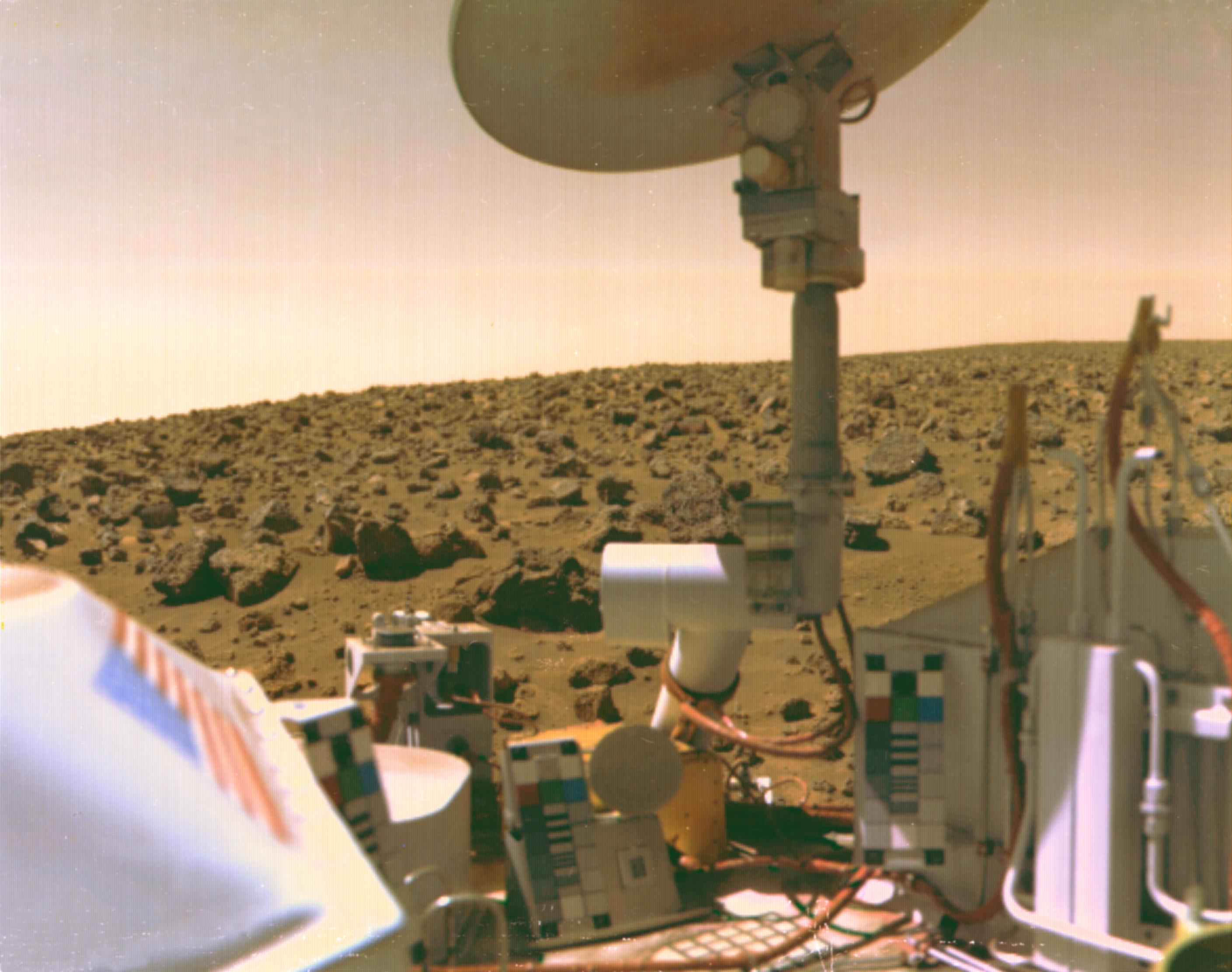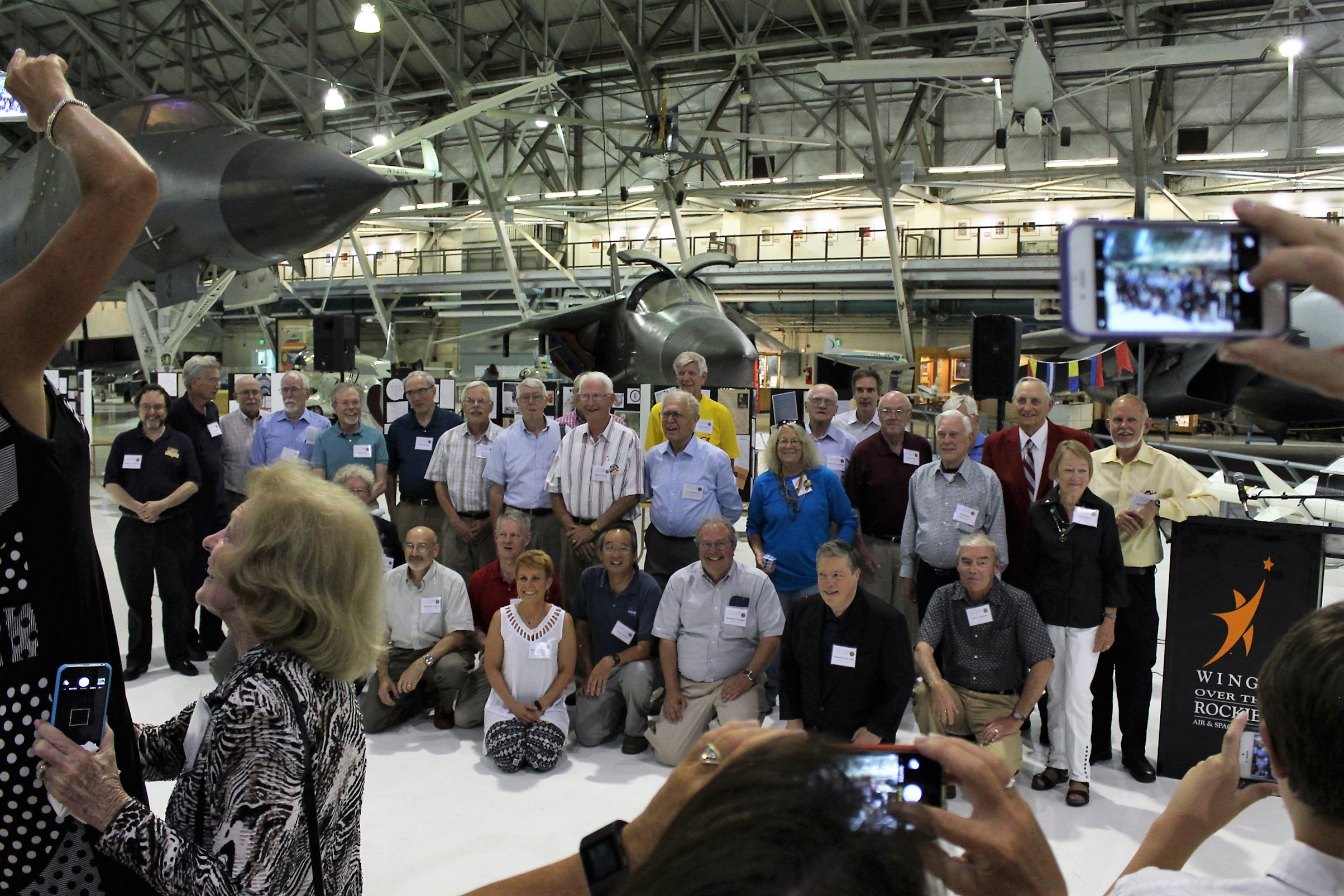Viking on Mars, 40 Years Later: Reflections on Pioneering the Red Planet


DENVER — Forty years ago today (July 20), NASA's Viking 1 Mars lander became the first American spacecraft to touch down safely on the Red Planet.
It was a huge moment in the history of space exploration. Viking 1 soon beamed images of Mars home to its handlers, giving humanity its first good, up-close looks at the planet's surface.
The lander (and its twin, Viking 2, which touched down 6 weeks later) also performed a series of life-detection experiments whose intriguing, ambiguous results shaped the future of NASA's robotic Mars program — and the broader hunt for alien life throughout the solar system. [Viking 1: The Historic First Mars Landing in Pictures]
Viking-era scientists, engineers and former student interns celebrated and discussed the mission's lasting legacy on July 16 here, at the Wings Over the Rockies Air & Space Museum. The event was organized by the Viking Mars Missions Education & Preservation Project, and sponsored by the aerospace company Lockheed Martin in partnership with The Space Foundation and the museum.
Hunting for Mars life
Viking 1 and Viking 2 were the most complex interplanetary missions of their time, created to tackle the still-perplexing question: Is there life on Mars?
Each Viking spacecraft consisted of a lander and an orbiter. In 1969, NASA picked the company Martin Marietta (now Lockheed Martin) as the principal industrial contractor for Project Viking. In partnership with NASA and the agency's Langley Research Center in Virginia, Martin Marietta built and tested the two landers at its facility near Denver. NASA's Jet Propulsion Laboratory (JPL), in Pasadena, California, built the orbiters for the mission.
"We looked at hard landers, soft landers, the different levels of science that we could do," Terry Gamber, a Viking engineering team member at Martin Marietta at the time, said during the July 16 event.
Breaking space news, the latest updates on rocket launches, skywatching events and more!
"It slowly came together," he told Space.com, emphasizing the host of hard engineering decisions.
"We had to shrink things and get the mass down," Gamber added. "We had to figure out how to cram all the science into the Viking aeroshell. It was very hard to get everything in there … folding the legs and the antenna … It was a major challenge." [7 Biggest Mysteries of Mars]
Dealing with unknowns
The Viking designers had to deal with multiple models of Mars' atmosphere, Gamber said.
"We didn't know the planet's atmospheric density very well, especially at higher altitudes," he said. (Only one spacecraft had ever landed softly on the Red Planet before — the Soviet Union's Mars 3 probe, in December 1971, and controllers lost contact with it less than 20 seconds after touchdown.)
The team redesigned the landers' descent engines, Gamber said, to ensure that the spacecraft didn't blast away the surface of Mars and fall into a hole.
"We didn't know the load-bearing strength of the Mars surface," he explained, adding that there was just 10 inches (25 centimeters) of clearance between the landers' bottom and the ground.
"We didn't design the three-legged lander for a rocky surface. We were very surprised to see all those rocks when we landed," Gamber said.
"If there had been a big rock under the lander, we would have tipped. When you look at it, just about everything worked perfectly. There were no big surprises," he added. "On Viking, we were lucky. Any of those things could have bit us."
Hazard watch
Concurring on Viking's good fortune was Larry Crumpler, the research curator of volcanology and space sciences at the New Mexico Museum of Natural History and Science in Albuquerque.
As a Viking intern, Crumpler worked with Viking orbiter imagery to get the second lander down on Mars. "My job was to do hazard analysis," he told Space.com.
This work involved using hand-crafted photo mosaics, grids and a movable overlay of the Viking landing ellipses, he said.
"I slid it around until I got the lowest hazard contours," Crumpler said.
The resolution of the imagery used was about 330 feet (100 meters), "so the hazards were something that was bigger than that," he said. "I could see a lot of bumps that were several hundred meters across, so each of those was a hazard. Any of the terrain that looked kind of funky, that was a hazard. We didn't want to land on a slope or a hill, so that was a hazard."
But the real surprise came with Viking 2's lander imagery, which showed that the vehicle's successful touchdown owed a lot to blind luck, Crumpler said.
"There were lots of rocks," he said. "It was nothing like what you could see from orbit. In those days, we just didn't have the information to really characterize things at that level of detail."
'Exploration first-hand'
Andrew Chaikin served on the Viking missions at JPL, as an intern from Brown University specializing in geology.
"We witnessed exploration first-hand," Chaikin, now a noted science journalist and space historian, told Space.com. "The moment I'll never forget is that first picture."
Chaikin sat with geologists as Viking 1's first photo from the Martian surface began to come in to mission control, line by line.
"It was slow-motion practically … the five lines that came in, like they were being dragged by a slow-moving column of ants," Chaikin said. "Five lines at a time, building from left to right. It was like somebody opening a window shade sideways on the landscape. It was so clear. We could see rocks, pebbles and dust. It was really there. It was really Mars."
Viking established the foundation for how to land on Mars, Chaikin said.
"I think of Viking in some ways as the Apollo of robotic missions in terms of difficulty," he said.
A lasting legacy
Viking was "a signatory event in my life," said Penny Boston, the director of NASA's Astrobiology Institute at the agency's Ames Research Center in Moffett Field, California.
At the time a college undergraduate, Boston said that first picture from the Viking 1 lander, which showed the vehicle's foot, "was a moment in which something that had been a dot in the sky actually became a place."
Boston recounted the Viking project's search for life on Mars: "We took the collective wisdom of the biological community about what life was — what microbes did and how you could detect them — and we packed all that knowledge into a little box. And we filled it with hope and filled it with aspirations." [The Search for Life on Mars (A Photo Timeline)]
Viking sniffed the air and tasted the soil, Boston said, "and it didn't find anything definitive. We didn't have possible results; we had very equivocal results."
Though Viking didn't return solid evidence of Mars life, Boston regards the mission as a spectacular success, both because of the data it gathered and the lessons it taught.
"A lot of times, nature says, 'Oh no, it's not that easy,' and 'You have to really struggle,'" Boston said. "In some of our apparent failures lay the potential for some of our greatest successes. Viking galvanized a lot of us. It was a splendid gift to humanity and science."
One aspect of that gift was the realization that Martian soil is nothing like that of Earth, said Viking veteran Ben Clark, now a senior research scientist at the Space Science Institute in Boulder, Colorado.
"That soil affected the tests for life and our understanding [of] how liquid water may exist on Mars, in the forms of salt-rich brines," Clark told Space.com. "With each new mission, we have learned more and more about how to interpret the Viking results and how they are broadening our understanding of this unique planet. Exploration is just that — learning about the unknown."
Leonard David is author of "Mars: Our Future on the Red Planet," to be published by National Geographic this October. The book is a companion to the National Geographic Channel six-part series coming in November. A longtime writer for Space.com, David has been reporting on the space industry for more than five decades. Follow us @Spacedotcom, Facebook or Google+. Originally published on Space.com.

Leonard David is an award-winning space journalist who has been reporting on space activities for more than 50 years. Currently writing as Space.com's Space Insider Columnist among his other projects, Leonard has authored numerous books on space exploration, Mars missions and more, with his latest being "Moon Rush: The New Space Race" published in 2019 by National Geographic. He also wrote "Mars: Our Future on the Red Planet" released in 2016 by National Geographic. Leonard has served as a correspondent for SpaceNews, Scientific American and Aerospace America for the AIAA. He has received many awards, including the first Ordway Award for Sustained Excellence in Spaceflight History in 2015 at the AAS Wernher von Braun Memorial Symposium. You can find out Leonard's latest project at his website and on Twitter.




